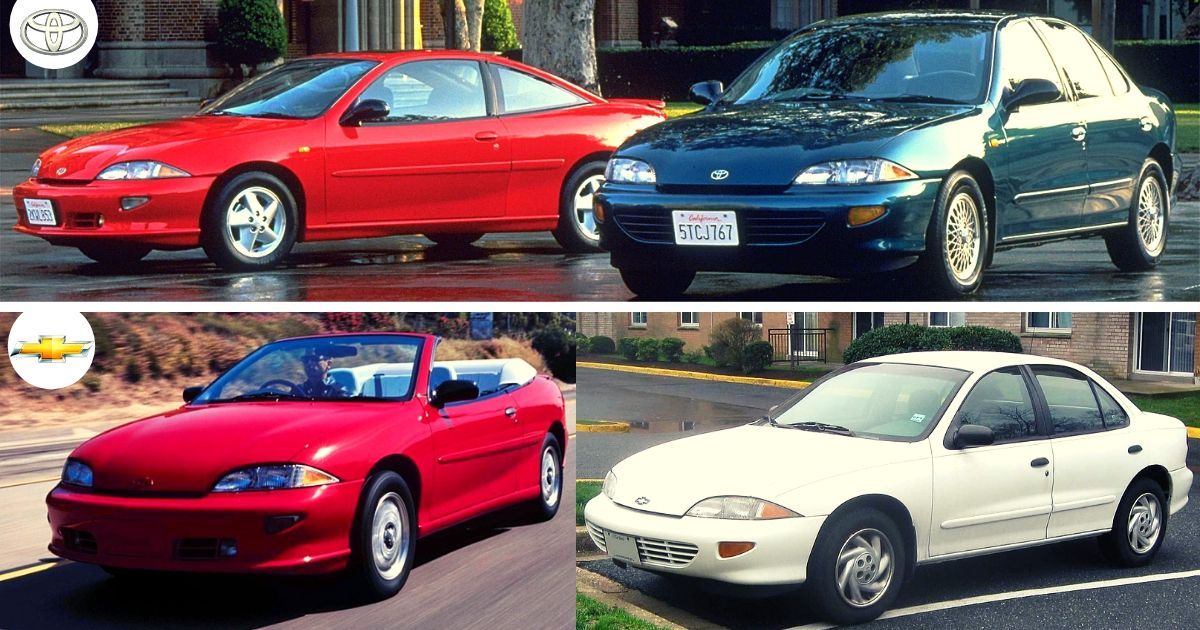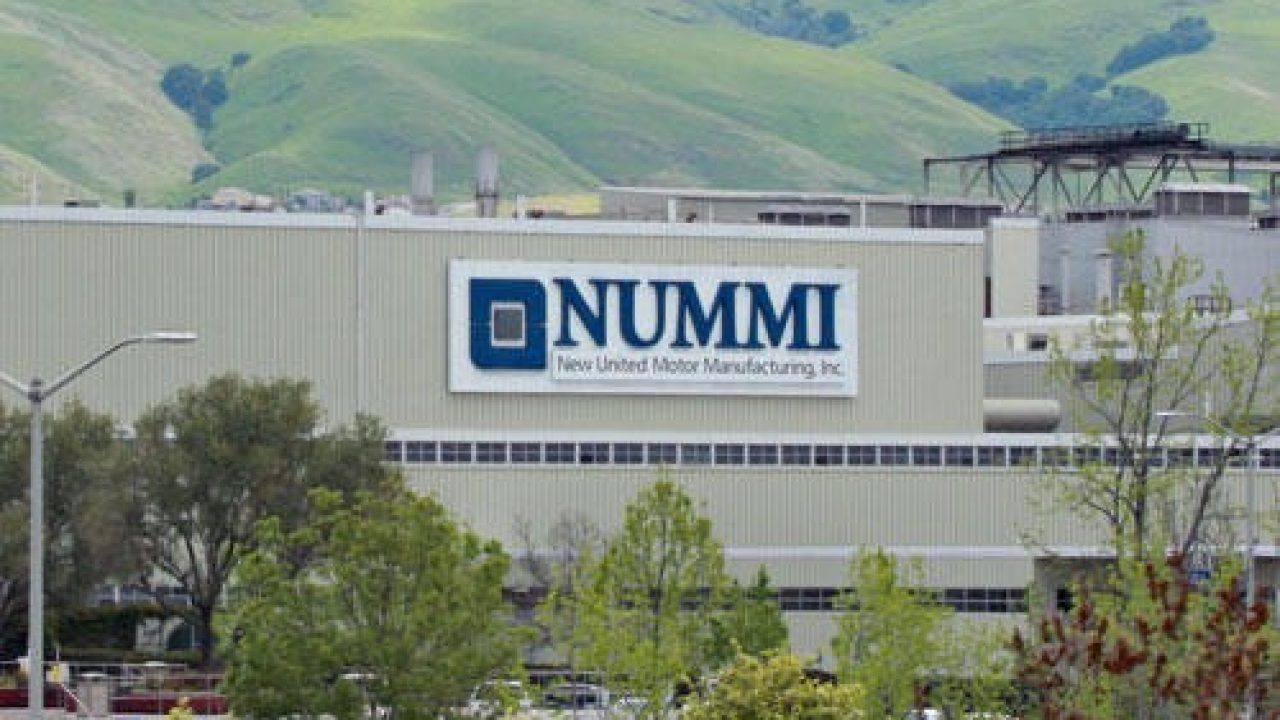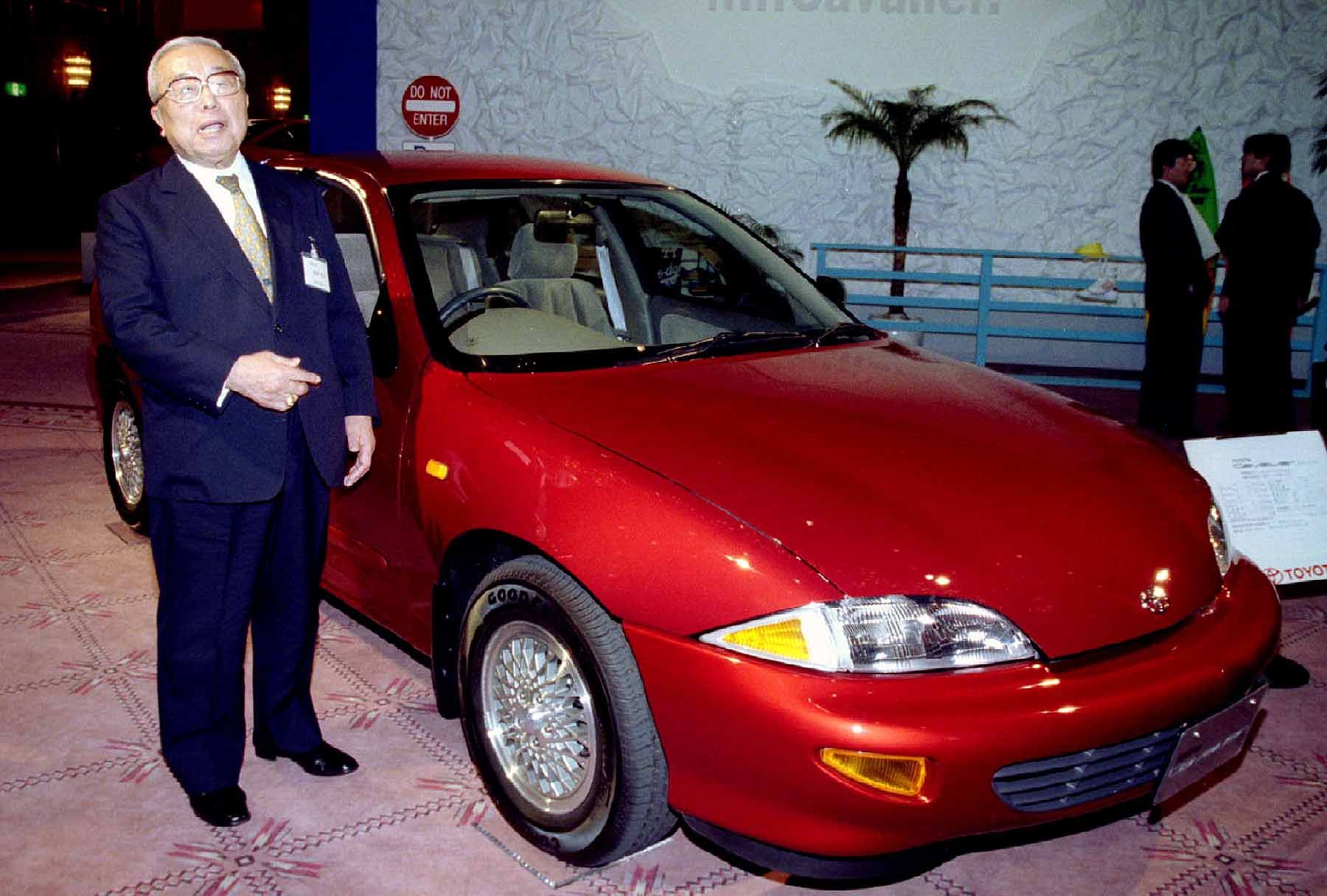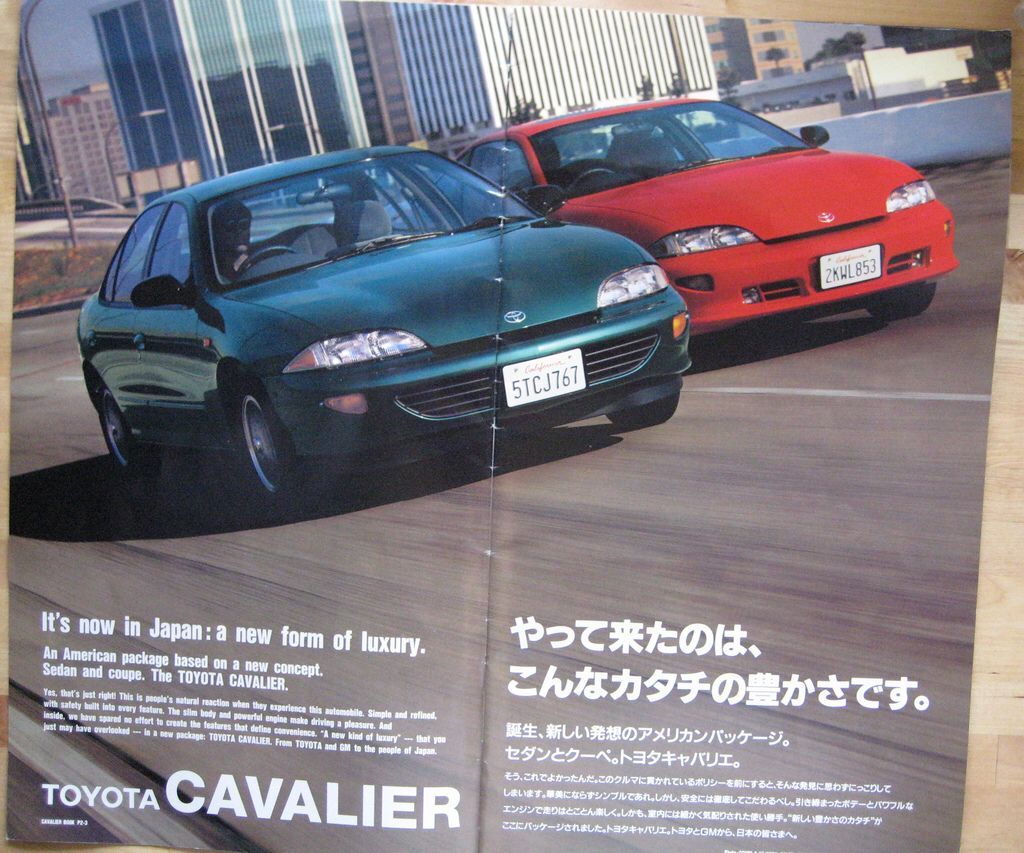On November 19, 1993, General Motors and Toyota signed what on paper appeared to be a good deal. The two automotive giants agreed to partner up, General Motors would sell Geo-badged Toyota's in America and Toyota would sell rebadged GM cars in Japan. The Japanese automotive market was doing well and General Motors wanted a piece of the pie.
The Toyota Cavalier became one of the first American made cars to be sold in Japan when it made its debut in 1995. The Toyota Cavalier was a rebranded Chevy Cavalier, a small compact car that was sold by General Motors from 1982-2005.
The Chevy Cavalier was an awful car by any standard. It was one of the lowest quality vehicles that General Motors has ever produced (and there have been more than a few). The Chevy Cavalier was built in Ohio and refitted with a right-hand drive system to make it more suited for the Japanese market. When the agreement began General Motors estimated that they would sell 20,000 Toyota Cavaliers a year, they ended up selling only 36,228 for the entire 4-year period of their agreement.
New United Motor Manufacturing Inc (NUMMI)
The Toyota Cavalier was not the first time General Motors and Toyota Collaborated, they first came together when they opened NUMMI. NUMMI or New United Motor Manufacturing Incorporated was an automobile manufacturing company formed by the two companies. The company was launched in 1984 in Fremont, California.
NUMMI produced cars such as the Chevy Nova, Geo Prizm/Toyota Corolla, Pontiac Vibes, and the Toyota Tacoma. The plant was eventually sold to Tesla in 2010 and is now known as the Tesla Factory.
Launching The Toyota Cavalier
Conquering a foreign market isn't easy nor is it cheap, but if it works out it can be worthwhile. At least that is what General Motors thought when they invested $1 billion on their infamous J-car.
The agreement between General Motors and Toyota was simple, and in theory, brilliant. General Motors would use its massive manufacturing complex in Ohio to produce high-quality low cost "small cars" and sell them in the Japanese market. The company stood to make a lot of profit had the Toyota Cavalier been successful.
When it was first launched the Toyota Cavalier piqued the curiosity of the Japanese consumer. In its first year, it sold 11,467 units, this was not a bad return but it was well short of their 20,000 unit mark. Unfortunately, that first year would be its best selling year, the Toyota Cavalier never came close to reaching those numbers ever again.
Why The Toyota Cavalier Flopped
When the Toyota Cavalier was launched General Motors had already built a reputation for making poor-quality small cars and the Toyota Cavalier was no different. Had the Toyota Cavalier been solely made by Toyota it may have stood a chance but unfortunately, it wasn't and it didn't.
Decent Engine, Poor Fuel Economy
The Toyota Cavalier was launched in October 1995. General Motors gave the car their most advanced 4 cylinder engine to try and make it more appealing. The car was also equipped with the 4T40-E 4-speed automatic transmission. In theory, this was a great idea but the car was a gas guzzler. The poor fuel economy of the Toyota Cavalier discouraged the Japanese people from buying it.
Interior
The interior of the Cavalier was decent when it was first launched but during its run in Japan, General Motors decided to tinker with it and eventually ruin it. They fitted the Cavalier with a large airbag cover, ugly door handles, poorly made climate control dials, and an awful looking center console.
The seats of the Cavalier were also just as ugly as everything else about it. From the design to the fabric used, it was all a complete disaster.
Poor Build Quality
The Toyota Cavalier had a lot of electric and mechanical issues. The welding, the screws, and the bolting looked as if it was rushed job.
General Motors may have gotten away with the quality of the Toyota Cavalier had it been sold under a different name but Toyota prides itself on the quality and standard of its cars, so any car that holds the Toyota name will be held to an incredibly high standard.
The Cost
The cost of owning the Toyota Cavalier was higher than the average. When you include the tax implications, the insurance cost, and the price of the Toyota Cavalier the Japanese public thought that it was all too expensive.
The experiment came to an end on April 12, 2000. With a whopping 36,228 units sold in 4 years, General Motors' attempt at conquering the Japanese market was a total failure.




